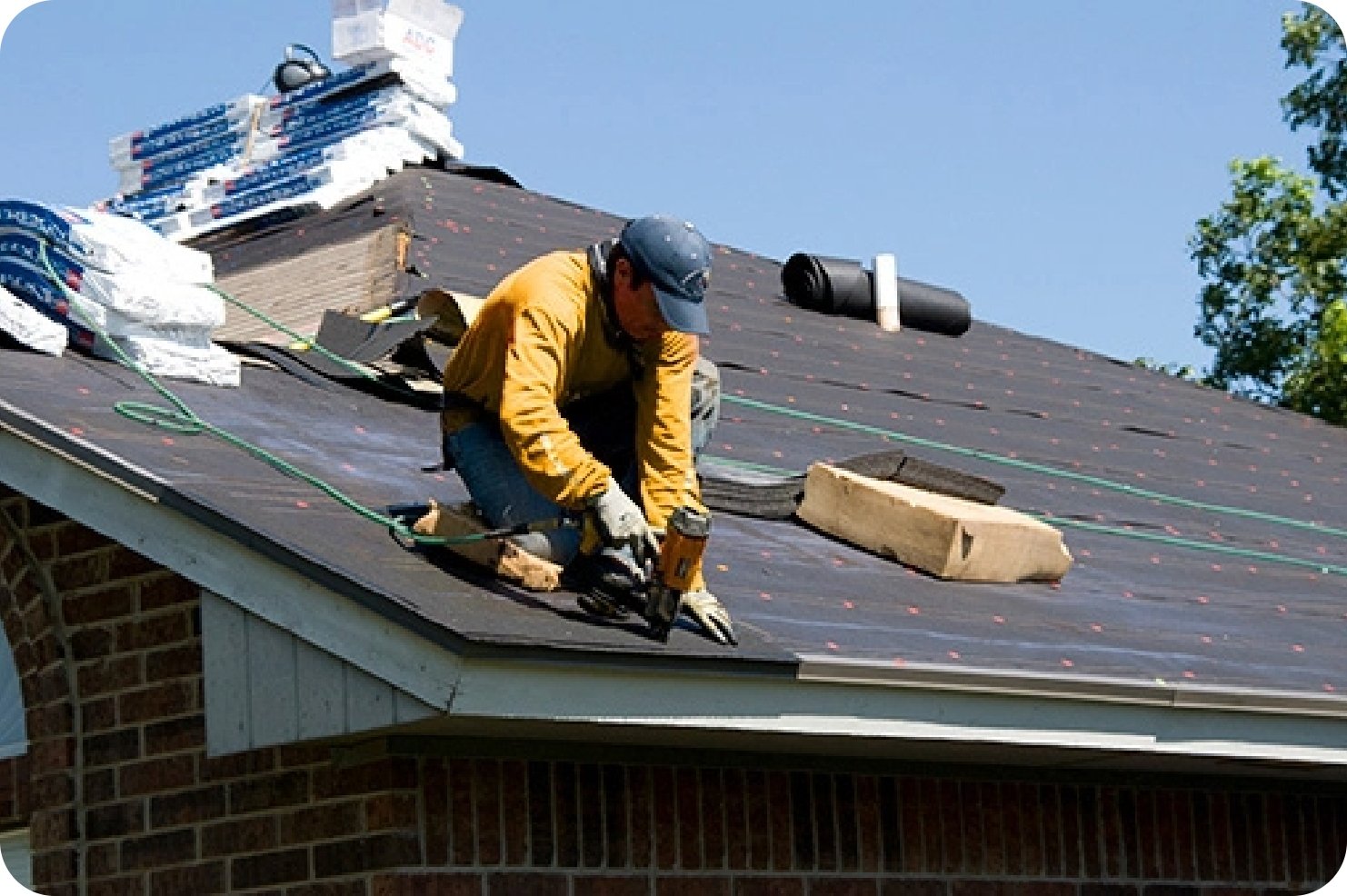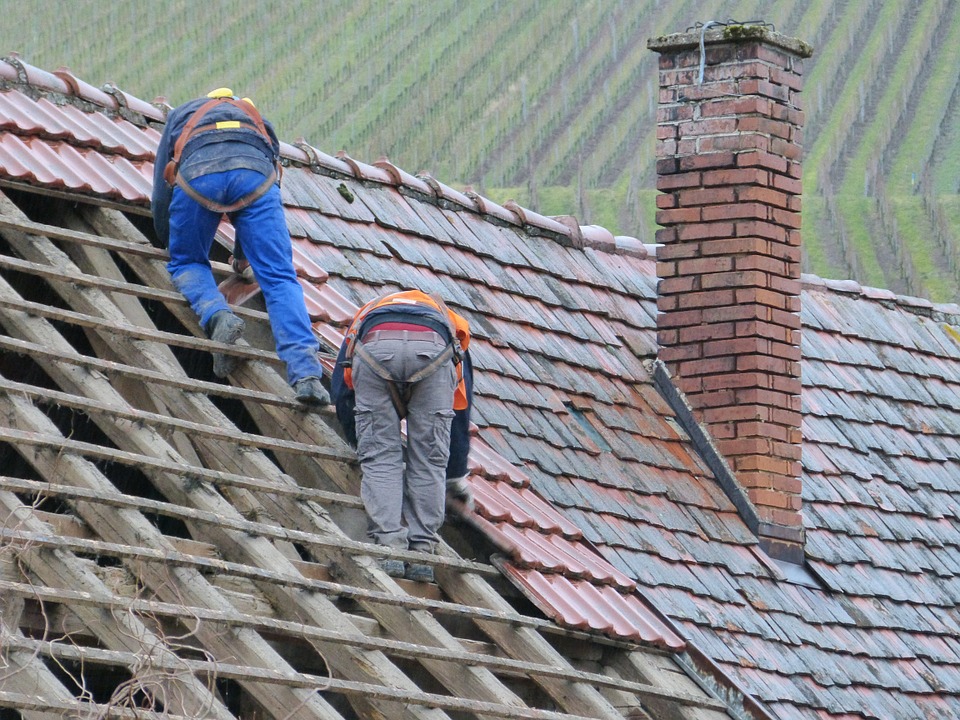Preventative Roofing Upkeep: Tips to Prevent Costly Fixings
To avoid expensive fixings, you ought to evaluate your roofing routinely for missing or damaged shingles, tidy your seamless gutters and downspouts to stop clogs, and trim looming branches. These simple actions can considerably expand your roof's life-span, and there's lots much more you can do to shield your investment.
Examine Your Roof Covering Consistently
When you check your roof covering on a regular basis, you can catch prospective concerns prior to they come to be expensive repair work. Begin by examining for missing, split, or crinkling shingles; these are indications that your roof may need focus. Search for any type of visible wear around chimneys, vents, and blinking, as these locations are usually prone to leakages. Take note of any kind of sagging or irregular areas, which can show architectural issues.
After a tornado, it's vital to examine your roof for damages brought on by high winds or hefty particles. Do not forget to inspect the bottom of your roof in the attic room; try to find indicators of dampness or mold and mildew, which can indicate leaks. You ought to also watch out for granules in your gutters, as they can indicate shingle deterioration. By taking these steps, you'll prolong your roofing system's life-span and conserve yourself from unexpected costs. Regular inspections are crucial to keeping a healthy and balanced roof.
Tidy Gutters and Downspouts
Normal roof inspections naturally lead to a crucial task: cleansing your gutters and downspouts. Clogged seamless gutters can trigger water to back up, resulting in potential roof covering leaks and architectural damage. To prevent these concerns, make it a routine to examine your seamless gutters a minimum of twice a year, particularly after hefty tornados or fall when leaves accumulate.
When you cleanse them, start by getting rid of particles like fallen leaves, twigs, and dirt. You can make use of an inside story or your hands, yet bear in mind to put on handwear covers. After clearing the particles, purge the rain gutters with water to guarantee correct drain. Don't fail to remember to check downspouts for clogs. If water isn't flowing freely, you could require to make use of a plumbing professional's snake or a hose pipe to get rid of the blockage.
Address Overhanging Branches
Looming branches can pose a severe threat to your roof covering, so it's crucial to cut them regularly. Not only can they create damage throughout tornados, but they can also welcome pests. Make it a practice to examine for any type of indications of wear or damage to keep your roofing in top form.
Trim Frequently
Among the most essential action in roof maintenance is to cut those branches that hang as well near your home. Overhanging branches can create major problems, from particles build-up to possible damage during storms. follow this Consistently cutting back these branches maintains your roof clear and lowers the threat of leakages and pests. Make sure to analyze the wellness of the trees around your home; weak or dead branches position an also better hazard. Objective to cut branches at least 6 feet far from your roofline, guaranteeing they will not enter into call with your shingles. You don't need to tackle this task alone; hiring a specialist arborist can ensure efficient and secure cutting, protecting your roofing and enhancing your home's total appearance.
Inspect for Damages
 roof repair
roof repair
Inspect for Harmed or Missing Roof Shingles
It's important to examine your shingles consistently for any type of damages or missing out on items. Replace missing out on tiles immediately to protect against further problems if you spot any type of problems. Additionally, watch on how the climate affects your roof, as severe conditions can cause deterioration.
Inspect Frequently for Damage
Regularly checking your roof for damages is essential to maintaining its honesty and prolonging its life-span. Seek signs of wear, such as fractured, curled, or missing tiles. Also tiny concerns can lead to significant issues if left unaddressed. Pay interest to areas where debris builds up, as this can trap dampness and increase degeneration. Check your roof covering after heavy storms or strong winds, as these conditions can dislodge or harm shingles. Don't forget to inspect the blinking around smokeshafts and vents; if it's compromised, it can bring about leaks. By making roofing system evaluations a regular part of your maintenance regimen, you can catch troubles early and save yourself from expensive repair work down the line. Your roofing will certainly thanks!
Replace Missing Tiles Quickly
After checking for any type of damages during your evaluations, you might discover that some tiles are missing or endangered. Don't wait to replace them; prompt activity can avoid further problems. Missing shingles subject your roof covering to wetness, which can bring about leakages and even more considerable damage in time.
When you notice a missing out on shingle, check the surrounding shingles for any that are cracked or curling, as these may require replacing also. Make certain to make use of tiles that match your roof's shade and design for a seamless look. Don't hesitate to call a specialist if you're not sure regarding doing it on your own. Maintaining your roof in top form is essential for safeguarding your home and avoiding pricey fixings down the line.
Monitor Climate Effect Frequently
As storms roll via your location, maintaining a close eye on your roofing system comes to be vital. After each tornado, take a moment to inspect your roof covering for any harmed or missing tiles. Climbing onto the roof isn't always required; you can typically detect issues from the ground with binoculars.
 roof repair
roof repairMake Sure Proper Ventilation
While numerous homeowners concentrate on the outside and architectural aspects of their roofs, assuring correct air flow is necessary for preserving its longevity and performance. Poor ventilation can result in warm build-up and moisture buildup, which can trigger damages with time. Make certain your attic room has sufficient airflow by installing soffit vents and ridge vents. This arrangement enables a continuous flow of fresh air, helping to regulate temperature level and lower humidity degrees.
Check your vents on a regular basis to assure they're not obstructed by insulation or debris. If you see any indicators of mold and mildew or mildew, it can suggest insufficient air flow. In addition, consider utilizing a powered ventilator if your home has problem with air flow. Correct ventilation not just improves your roofing system's life-span however likewise enhances power efficiency, keeping your home comfortable year-round. By taking these steps, you're buying your roofing system's health and wellness and preventing costly repair services down the line.
Look for Indications of Leaks
Proper air flow assists avoid dampness accumulation, but even with excellent air flow, it is necessary to watch out for signs of leakages. Beginning by examining your ceilings and walls for water discolorations or staining, which can suggest a leakage above. Do not forget to inspect your attic for moist spots, mold and mildew, or mildew, as these can be early indication. Search for peeling paint or bubbling wallpaper, too; these frequently signal moisture breach.
Outside, examine your roof for missing tiles, cracks, or harmed flashing, as these vulnerabilities can lead to leakages. Routinely checking for these signs will certainly assist keep your roof's integrity and keep your home safe and completely dry.
Schedule Professional Evaluations
 roof repair
roof repair
Go for at least one examination per year, preferably in the springtime or loss, to line up with seasonal adjustments. During these examinations, specialists can determine potential risks like missing tiles, damaged flashing, or indications of mold and mildew. They'll also examine for debris accumulation that can result in water merging.
Do not wait on visible indications of trouble; taking proactive actions can expand your roofing's life-span. Purchasing routine evaluations not just safeguards your home however additionally offers you tranquility of mind knowing your roof covering is in good problem.
Often Asked Inquiries
How Often Should I Do Roof Inspections?
You need to do roof covering assessments at least two times a year, ideally in springtime and loss. Normal checks help you identify prospective concerns early, saving you money and time on costly repairs down the line.
What Tools Do I Need for Roof Covering Upkeep?
For roofing system maintenance, you'll need a tough ladder, security harness, roofing nails, a hammer, an utility blade, caulk, a trowel, and a flashlight. Don't neglect handwear covers and security goggles to maintain yourself protected!
Can I Tidy My Roofing Myself?
Yes, you can clean your roof covering yourself. Just ensure you have the right devices, put on security gear, and comply with proper strategies. It's crucial to be mindful to avoid accidents and ensure effective cleansing.
How Can I Recognize Roof Covering Leakages Early?
To recognize roofing system leaks early, you'll intend to evaluate your roofing system frequently. Look for water spots, mold and mildew, or missing tiles. Pay interest after hefty rain, and don't think twice to examine the attic room for wet spots.
What Are the Signs I Required a New Roof Covering?
If you see crinkled or missing shingles, persistent leakages, or water discolorations on ceilings,You'll need a brand-new roofing system. Furthermore, if your roofing system's age surpasses twenty years, it's smart to consider replacement earlier instead than later on.
To stay clear of expensive repair work, you need to evaluate your roof covering routinely for missing or harmed shingles, clean your seamless gutters and downspouts to protect against obstructions, and trim looming branches. Missing roof shingles subject your roof covering to wetness, which can lead to leakages and more substantial damages over time.
After each tornado, take a minute to check your roofing for any kind of damaged or missing out on roof shingles.Outside, examine your roof for missing out on shingles, splits, or damaged blinking, as these vulnerabilities can lead to leakages.To identify roof covering leakages early, you'll want to inspect your roof covering on a regular basis.